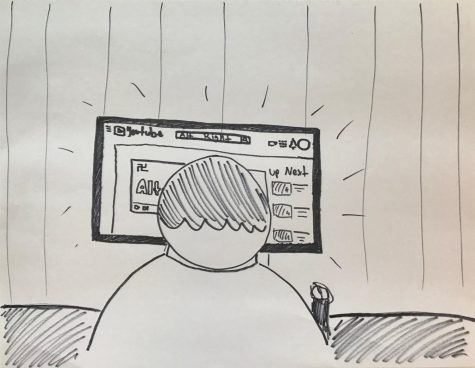How the digital age breeds political extremism
May 1, 2020
Today, American politics are drastically different than they were at the country’s creation. Various factors have influenced the fluctuation of party policies and proceedings. The most recent and impactful factor is the introduction of the internet and extensions of the world wide web. When people visit the social media site YouTube, they are greeted with videos that are in their “recommended list” and are only exposed to content that is synonymous with what they have previously watched. Businesses like YouTube benefit from placing their users in a world of comfortable content. One video from an alt-right creator such as Richard Spencer can lead to hours spent viewing the torrent of videos from people with similar perspectives. This has created a new breed of idealogues. The internet serves as a platform through which radicalized groups can communicate through message boards and comments sections, hailing the rise of extremist political figures. These leaders are first exposed to their beliefs through digital media and primarily communicate online. Social media interfaces create personalized news feeds that allow individuals to only consume media that corroborate with their personal viewpoints. They foster a false sense of community when individuals only interact with people who share views similar to theirs. This dangerous system reveals the harmful effects that social media can have when used as a tool for indoctrination.
The addictively comforting nature of the internet can lead users down a rabbit hole of radicalized content. A New York Times article by Kevin Roos

e, titled “The Making of a YouTube Radical” from June 8, 2019, analyzes the experience of Caleb Cain. Cain was a former adherent to the Alt-Right cause, a radical online movement that provides an alternative to traditional conservatism. The movement is meant to represent a new age of younger, tech-savvy conservatives who often align themselves with white nationalism and neo-nazism. Roose explains that Cain’s story is not unique.
“Over years of reporting on internet culture, I’ve heard countless versions of Cain’s story: an aimless young man – usually white, frequently interested in video games-visits YouTube looking for direction or distraction and is seduced by a community of far-right creators,” Roose said.
Cain was indoctrinated into the beliefs of the Alt-Right after initially viewing a video by Stefan Molyneux, a Youtuber with nearly a million subscribers who promulgates anti-feminist messages and convinces his audience that they must fight back against the threat of socialism. Followers of the cause are often teenagers the same age as Redwood students who are exposed to dangerous content through an open and widely uncensored system. A survey from Common Sense Media found that most teens primarily get their news from social media. In the new age of digital information, the media that teenagers consume can have a powerful effect on their politics and view of the world. Their reliance on unprofessional sources is dangerous. The lack of awareness surrounding the issue allows it to develop in the dark, dodging the scrutiny of a naive public.
The effects of this extremism have revealed themselves to be shockingly tangible. The murder of Heather Heyer and wounding of eight others during the 2017 Charlottesville car attack proved that the rhetoric of the new neo-nazis and white supremacists is not meaningless. A 2017 poll from the Washington Post found that about 10 percent of respondents supported the alt-right and another poll from the American National Election Survey found that 38 percent of non-Hispanic white respondents felt a strong feeling of white solidarity. The Alt-Right and their sub-groups’ rise coincides with the prominence of the self-proclaimed antifascists or Antifa for short. Despite their obvious ideological differences, Antifa and the Alt-Right share both rely on the idea that there is a looming threat from the opposing side that must be stopped by the use of violent means. The two groups fuel each other and feed off of their bloody interactions during mindless rallies and counter-rallies.
Although the effect of the actions of these groups on the general population may appear to be minimal, it is important to recognize the potential of the two groups without falling for the same scare tactics that created them. The young demographics of ideologues are worrying and indicate future problems. Students at Redwood fall in the vulnerable age range and can have experiences that are similar to those of Cain’s. We should keep an eye on modern digital radicalism as it slowly gains supporters and preys upon impressionable subjects. The issue can often go unnoticed until its horrifically real results have already occurred.























